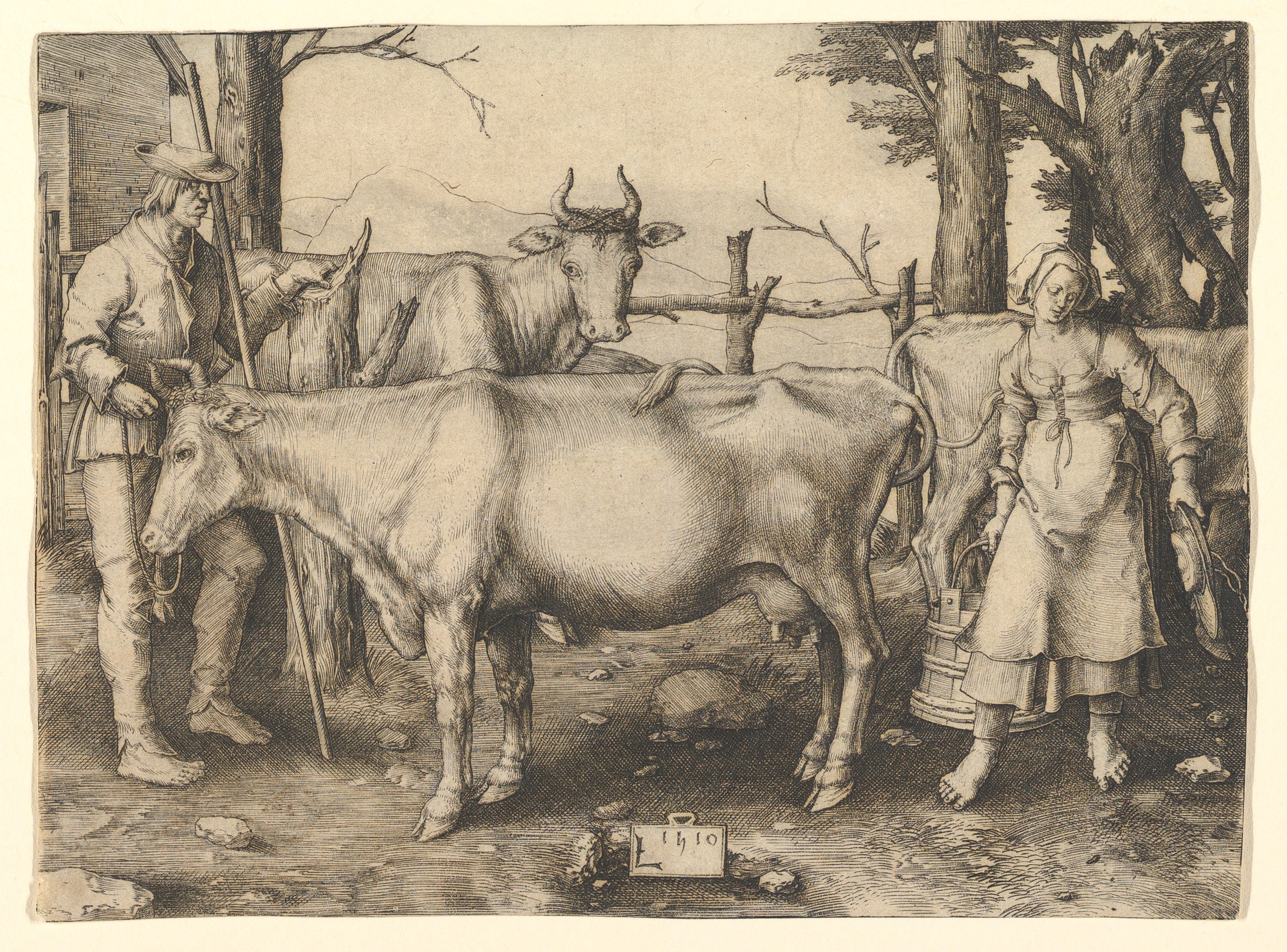Lucas van Leyden was the most important Dutch engraver of the Northern Renaissance. Born in Leiden (also known as Leyden), he specialized in this art form at a very early age and elevated it to the highest level. In 1604, the art theorist Karel van Mander (1548–1606) reported that Lucas, as a child prodigy, had completed his first dated engraving at the age of fourteen. His delicately engraved prints, already highly prized by artists and collectors during his lifetime, had a significant influence on the development of European printmaking.
Lucas van Leyden, The Large Ecce Homo, 1510, Engraving, 287 x 455 mm (sheet), Staatliche Graphische Sammlung München © Staatliche Graphische Sammlung München.
Lucas van Leyden, Nude Woman Picking Fleas off a Dog, 1510Copperplate, 105 x 72 mm (sheet)
Staatliche Graphische Sammlung, Munich
© Staatliche Graphische Sammlung, Munich
Lucas is famous for his subtle shades of grey, which he used to create the impression of spatial depth and atmospheric mood. Not least, it was Lucas’ narrative talent that captivated the public. He often transferred the main event of his theatrical compositions to the background and emphasized the moment shortly before or after in the foreground as the focus of his narrative. He furthermore added an abundance of details. Giorgio Vasari and Karel van Mander, in some of the earliest art-historical writings, praised the rich variations in the faces he portrayed as well as his variety of garments and headwear.
A close study of Lucas’ engravings opens up a world of its own, one that holds many surprises – also of an amusing manner. Even today, Lucas’ idiosyncratic subjects and imaginative narratives continue to enchant the viewer.
Lucas van Leyden (1489/1494–1533) , The Milkmaid, 1510. Staatliche Graphische Sammlung München
His famous print of the Milkmaid from 1510, for example, initially pretends to be a realistic portrayal of rural life. Only upon closer inspection the viewer realizes the erotic allusions to the beginning of a liaison between the backwoods farmhand and the open-hearted maidservant. With his ironic view on the power of feminine attraction and his warning of the ruses and wiles of women, Lucas struck a chord with the taste of his clientele of the affluent citizenry.
The exhibition as well as the catalogue offer a pleasurable opportunity to rediscover an important and extensive collection of the Staatliche Graphische Sammlung München, to sensitize the eye for Lucas van Leydens’ delicate engravings, to get involved into his elaborated imagery, and to be captivated by his fanciful, sometimes even enigmatic stories.
Curator: Dr. Susanne Wagini
222 Images


Comments
Post a Comment